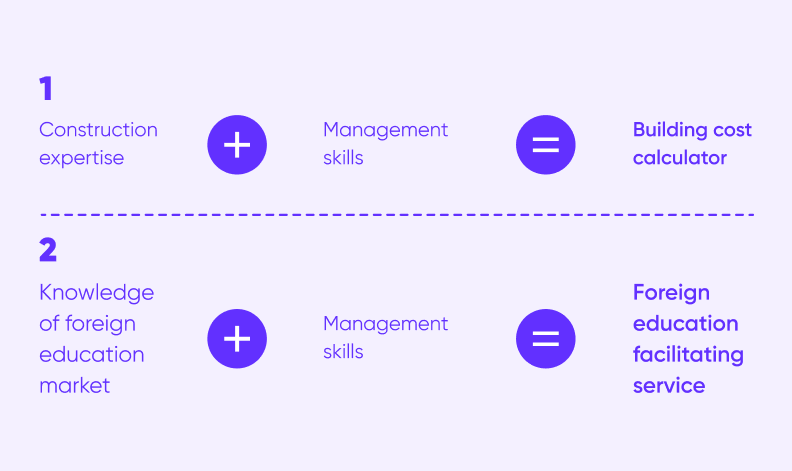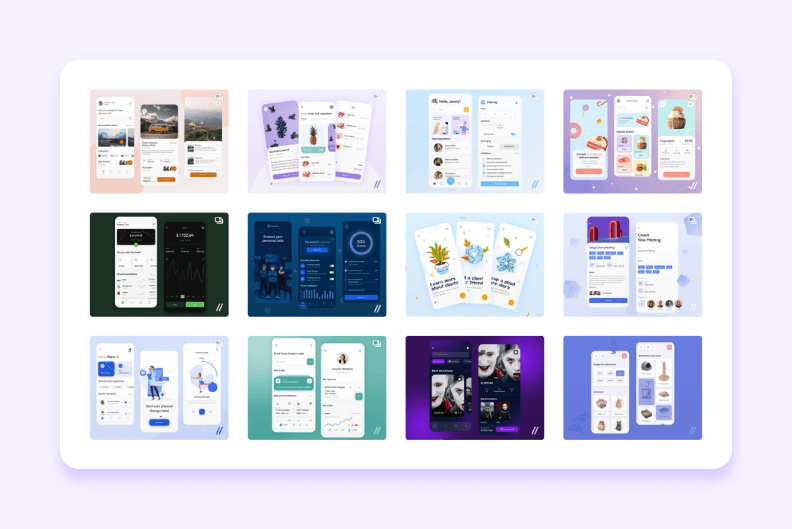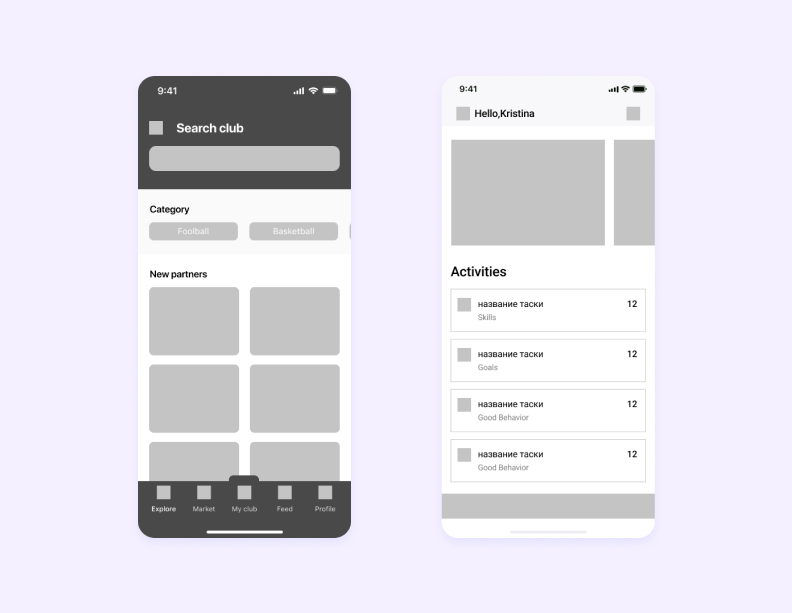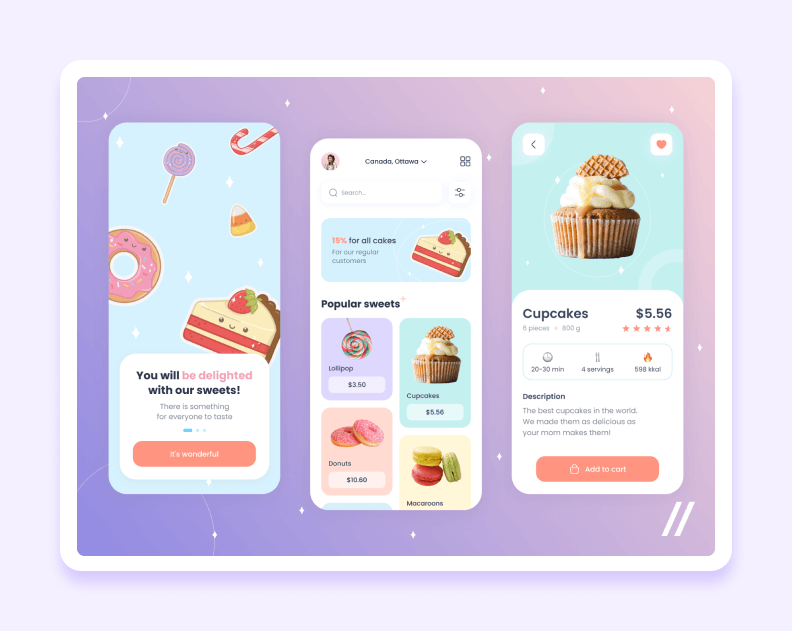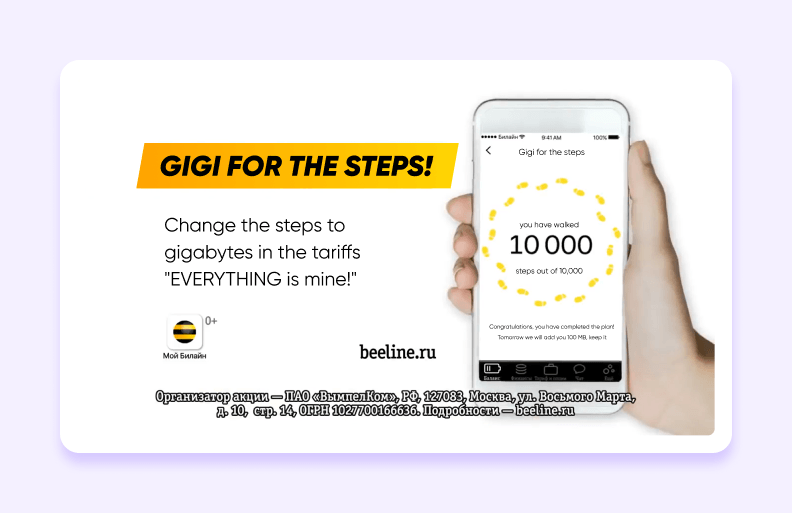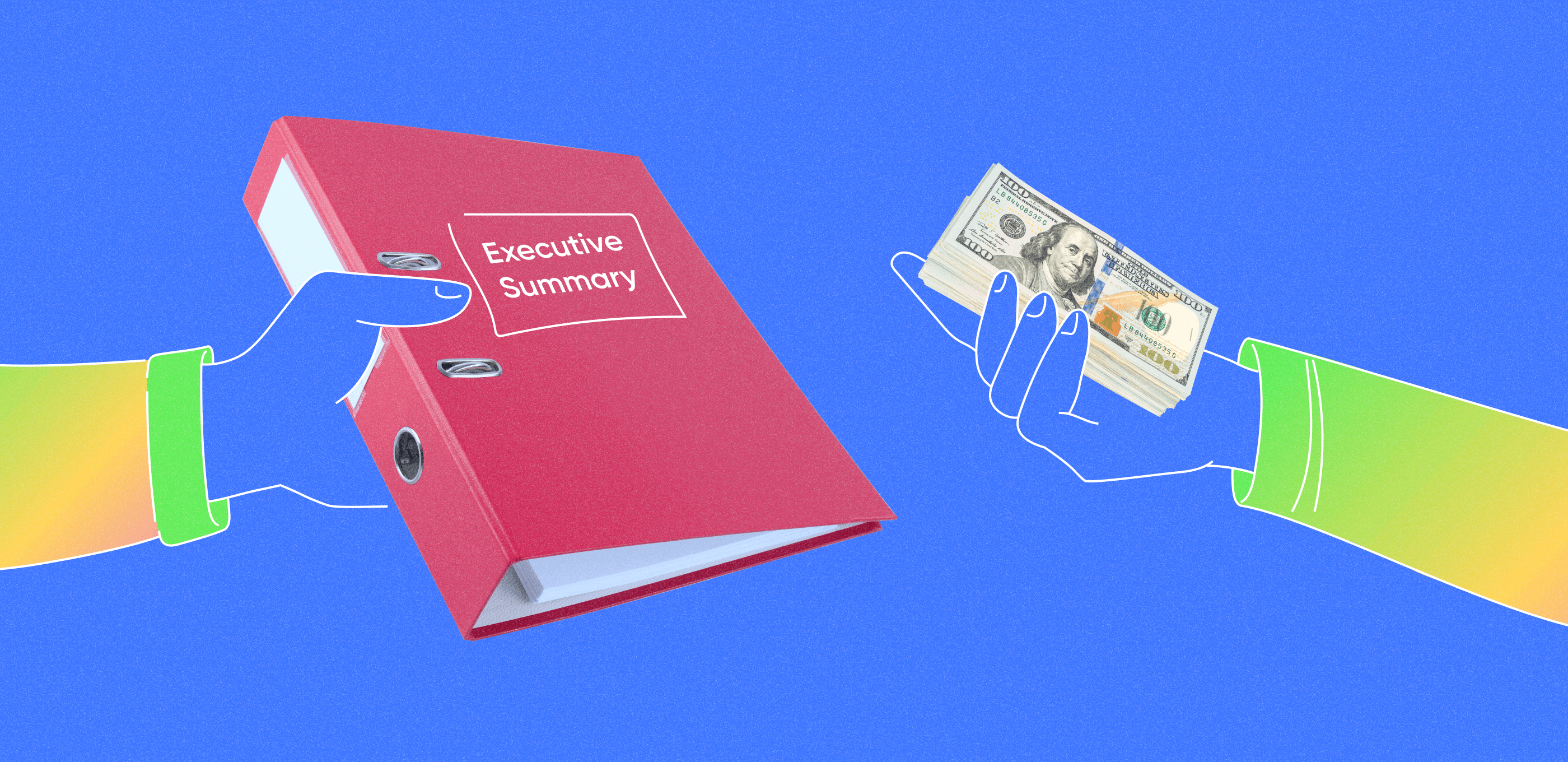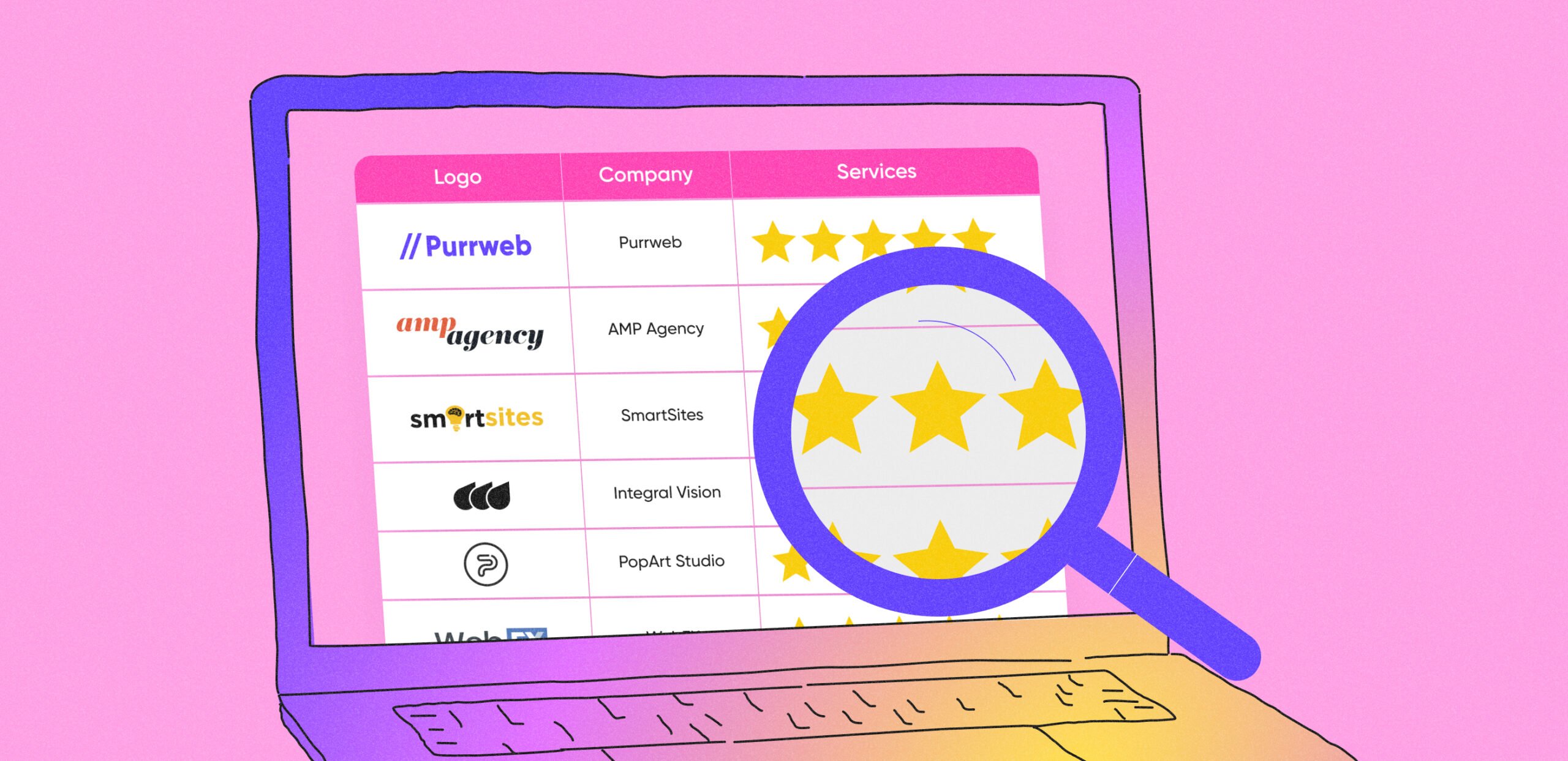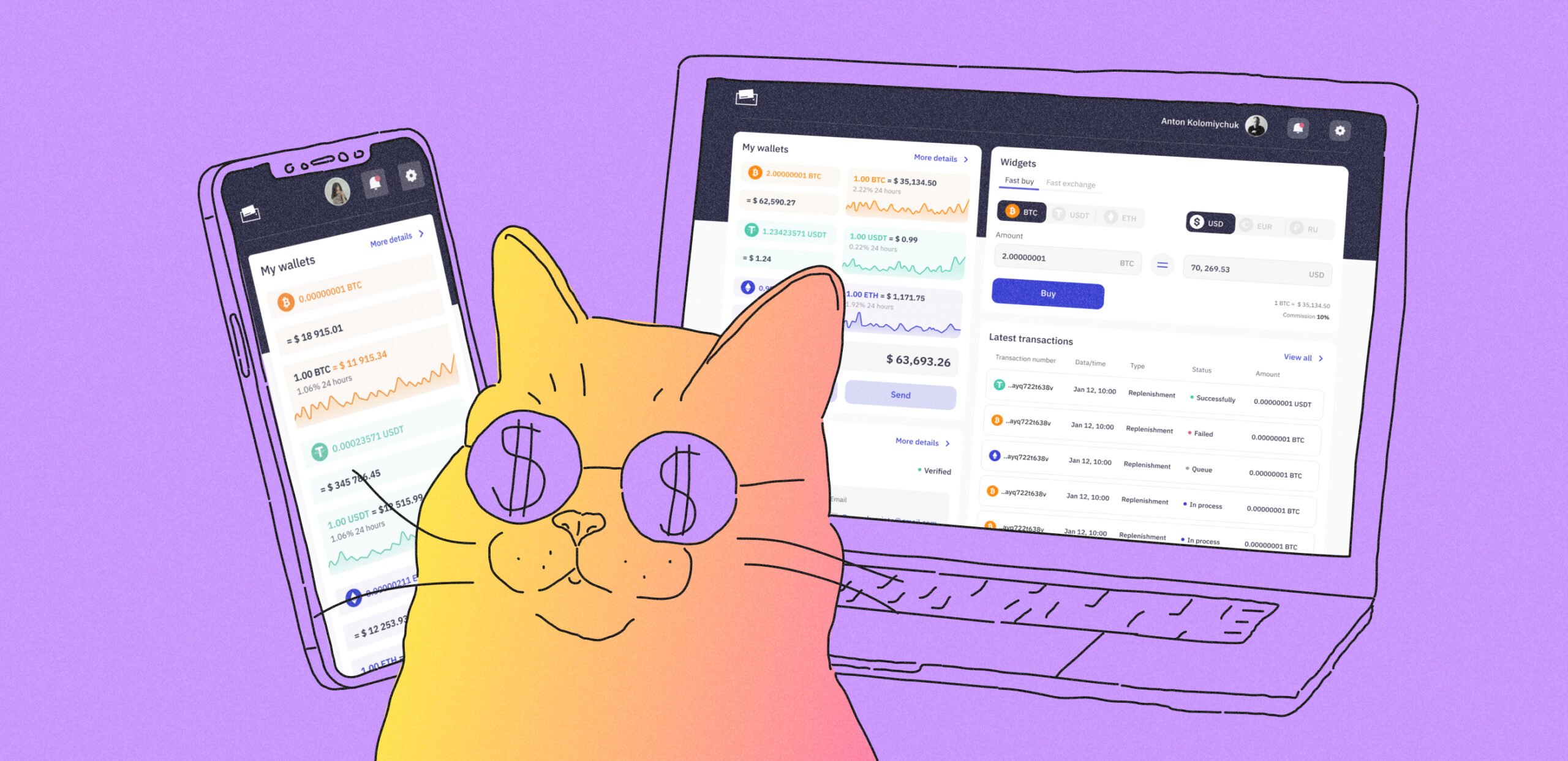Mobile app or website
Mobile traffic surpassed desktop traffic for the first time back in 2016. Since then, it has been only growing, reaching 77% in 2022. According to Statista, the average user spends as much as 5 hours a day on their smartphone. This attention can go to your brand or to your competitors if you do not use mobile app development services.
For some tasks, people will prefer to use the service on a desktop. For example, if you need to examine a kitchen set before buying. Or if you need to write a long reply to a colleague in the middle of the working day. In this case, you will likely use your desktop. But people are used to solving a much wider range of tasks with smartphones in their hands. If the users will not use your product to write long texts or examine pictures in the smallest detail, it’s worth to make an app for your business. If a user may need access to your service, any time, any place, then a mobile app is a must. For example, finance and banking apps or meditation apps and habit trackers.
It may seem that a mobile version of the site is enough, but it’s not. Here are just main advantages of apps that a mobile version does not have:
-
- Best customization. An app gives more opportunities to track geolocation, browsing history, purchases and searches, contacts and device data. This means that you can better personalize the content, and it will be more valuable to users.
- Using device capabilities. With an app, you can ask a person to turn on the camera or geolocation. This will help improve the quality of your service. For example, with geolocation, you don’t have to enter your address yourself to find a taxi or order a delivery. This is another reason to make an app.
- Ability to work offline. This is relevant if an app offers content to the user: books, music, dictionaries or articles for example. Sometimes there is no access to the Internet. With an app, you can keep core functionality available for offline use. For example, Google Maps app allows users to download and use any map offline.
- Sending push notifications. These are great marketing tools to help you stay in touch with users and manage their attention.
- Increasing customer loyalty. When people download an app, they are more likely to use it periodically. It is unlikely that they’ll want to look for a competitive service when yours is already installed.
A mobile app is a business solution that outperforms a website in many industries. But consider the situation. If your service is user-friendly, regularly needed and the user may require it anytime, anywhere, it is probably best to make an app. And if in doubt, in the article below, we analyze when a business needs a website, and when an app.
How to make a successful app — here are 16 rules to keep in mind.
1. Generate a powerful app idea
There are two ways: to come up with an innovative product or to stay on the beaten track, but make your service different from competitors. Both options are fully functional.
Innovative ideas are always a risk when you make an app. If you want to do something that no one has done before, there is a chance to “go viral”. But you can fail as well. It is necessary to use analytics, develop and design everything flawlessly, and most important — seize the moment. If you have found a need, there are probably entrepreneurs with similar ideas. You need to get ahead of them.
A good example of a successful application is Uber. They started over 10 years ago and were able to give people the desired service — an inexpensive taxi you can order with an app in a few taps. Uber was able to reduce prices because they had no call-center with operators. Instead they worked with freelance taxi drivers who used their own cars. The app became popular and gave rise to a lot of similar services around the world.
Another example of a successful mobile app innovative app that went viral is TikTok. The creators saw the trend for video content. When the Internet became fast, and good cameras became affordable, people got bored just looking at photos. Video content is more engaging and holds attention. The social network came out on time and captured a large market share.
It is difficult to keep up with worldwide giants: it seems that everything has already been invented. But there are many more innovative apps, niche, targeted products that are successful. For example, in 2021, an interesting project reached the finals of the Red Bull Basement 2021 competition — an app that directly connects medical workers with people who urgently need help.
But if you don’t have a unique app idea, it doesn’t matter — you can make an app in any field. The main thing is to make it better than existing apps are. Think of competitors’ apps as your MVP and think about how you can improve it. Need a cleaner interface? Faster technical support? Wider product range, high-quality content or a flexible payment system? Conduct competitor research, correct their mistakes — users will appreciate it. This is how to make a successful app.
We worked with a similar case: copied a successful product and completed it for another market. We’ll explain how our customer improved the idea below.
2. Be an expert
Preferably, you should be an expert in the field you need an app for. You can hire good analysts, developers, designers who will provide app development services. But you have to explain to them what you need exactly, describe the logic the app should work on. The members of a mobile app development teams can’t be experts in every industry at once. So the question of business expertise is a client’s responsibility. If you want to make a house construction cost calculator, you need to know what formulas to use. If you plan to launch a service to help students enter foreign universities, it is important to understand the specifics of university education in other countries.
Some entrepreneurs only manage, without delving deeply into the area of the company’s specialization. But in this case, a startup team should have experts. It’s important to involve them at different stages when you make an app. You will also need their expertise to promote your app and create content for it.
3. Have a competent analysis
In-house or external marketing specialists provide analytics. You can order market research separately, or as part of an app development service. At Purrweb, for example, analysts work with each client, since we make an app and are responsible for the final product.
Analysts study the target users, the market segment, and identify competitors. This helps to figure out exactly how the product should work and what functionality users prioritize.
Let’s consider some steps crucial for an effective analysis.
Detailed business plan
A thought-out business plan is essential for successful app development. It provides you with a clear vision of the project and guides everyone involved. A good business plan includes the following points:
-
- Product description
- Team
- Market research
- Unique selling points
- Marketing strategy
- Estimated development costs
- Development timeline
- Financial projections
- Regulatory considerations
A well-thought-out business plan provides benefits in three aspects:
Clear strategy. A business plan helps you establish the goals and objectives of the future app. It also lets you properly allocate the available budget for app development, marketing, and ongoing maintenance. The plan ensures that a product owner and a development team are familiar with the details of the project and their goals align.
Easier to succeed in the market. A thorough analysis of the market will allow you to find gaps in the niche that your solution will address. It can help you figure out what adjustments need to be made to increase your chances of success.
For example, you think that the market needs a social network for those who like to lead an active lifestyle. But after performing an analysis, you realize that this is too broad for a target audience. Such people just use Instagram. Due to strong competition, the chances of success are not high. Instead, it’s better to focus on a narrow target audience — those who want to lose weight. And market analysis can show that they don’t need a social network but need the help of qualified specialists.
Easier to find investments. Without a business plan, you will try to convince investors with only your words and emotions. With this approach, you won’t be likely to get the investments you need. A business plan is about numbers and cold calculation. That’s what investors are looking for. A detailed business plan gives them a good understanding of the application’s potential for success.
Now we’re going to dive deeper into market research and the unique selling proposition. These are some of the most important points in the plan, as they will help you determine the direction of the development.
Market research
Market research helps you determine the demand for your app in the market and understand whether its goals align with the needs of potential users. It includes analyzing competitors in your niche, defining the target audience, and identifying trends. We will consider each of them in more detail:
Competitor analysis. Examine competitors’ products by downloading and using their apps. Then you can read user reviews and highlight apps’ strong and weak points. The information you get can be helpful for comparing your idea with their products. With thorough competitor research, you will be able to identify areas for improvement and come up with unique key features.
Target audience. Conducting surveys, interviews, and forming focus groups allows you to gather information about your target users. It includes age, gender, habits, likes, and dislikes. The better you understand your target audience, the more accurately you can adjust your product for them. This approach increases the chances that your app will resonate with the target audience.
Market trends. To identify emerging market trends, you can use platforms like Statista, Data.ai, and Google Trends. It’s also worth monitoring different tech blogs. This way, you’ll ensure your app is innovative and stays in demand.
Unique selling points
USPs are unique features of your product that give it a competitive advantage. Before developing any app, it’s important to define your app’s unique selling points. They highlight the benefits of your app, which encourage users to choose it over alternatives.
These questions can help you identify USPs:
-
- What is the backstory or inspiration behind the app?
- What problem does my app solve?
- How does my app solve this problem differently or better than my competitors?
- What features or aspects of my app are most appreciated by users?
- Does my app integrate any innovative or cutting-edge technology?
For more information on what you need to learn before making an app — read our article by following the link below.
4. Choose a monetization model
How to make a successful app that generates profit once it enters the market? Before app launch, you need to decide on monetization. Think about how much do you want to charge and what for. After all, if users do not understand the value of the product or are repelled by a high price, there will be no profit. And if you offer too much for free or cheap, you run the risk of losing money. You need to find a balance. Let’s look at the main monetization models.
-
- Advertising. You can make an app that is free for users, and receive income from advertisers. This is one of the most common monetization models. A good option if the ads won’t distract a person too much while using the app. To prevent ads from annoying users, choose ads that are relevant to people. For example, a workout app might advertise sports products or digital health products.
- Freemium. In this model, users get some of the main content for free, and have to subscribe for more advanced functionality. It’s a good option for innovative products or those where it is important for users to assess the quality of the content before paying. For example, the language learning app Duolingo. You can go through initial levels for free, but you need to pay for advanced lessons. Here it is important to understand which part of core functionality to keep free so that the free version isn’t enough for users.
- Free trial period. Another option that allows you to show the value of the product before buying. For a week, a month or some other period, the app provides full functionality for free. When the offer ends — users are asked to pay for a subscription.
- Paid subscription. There are apps that you can’t use for free at all. This is a good model if you are sure that users understand the value of the product. Perhaps you are planning to make a powerful advertising campaign for the app, collaborate with a strong brand, or offer a unique service. At the same time, the subscription model implies that people will pay every month, quarter, year as long as they want to use the service. You can offer discounts for a one-time payment for a long period. It will help to plan your budget long term and save on advertising to retain customers. For example, this monetization model is used in a dating app like Tinder. By subscribing, users can get Super Likes, profile boosts, unlimited Rewinds, and so on.
- One time payment. This model is extremely rare since you need to maintain the app every day. You will have to spend a lot of money and attract crowds of new users endlessly. So you can combine this format with a subscription and use it as an “eternal subscription” format.
- Commission fees. This monetization model is good for aggregator apps and marketplaces. You don’t have to take fees from every user. For example, the app is not free for sellers, but for buyers it is. Bear in mind that you need to show users the app’s value before adding in-app payments.
- In-app purchases. A good model to make an app that sells something. Even if the main idea of your app is to provide content or service to people, you can offer an option to make some virtual purchases. For example, filters in photo editors or bonuses in a game.
If you are still not sure what model to choose, read our article where we analyze monetization models of successful startups.
5. Provide quality content or services
This is another aspect that is important to keep in mind when you are making an app. If you have a content oriented app — lessons, entertaining videos, podcasts or photos — it is important to take care of quality and uniqueness. For example, shooting a video is expensive: from script writing, to engaging experts, to camera work. High-quality text and photo content also requires investment. Moreover, to keep users interested, you will need to release something new regularly.
It is crucial to avoid plagiarism and unverified information in the content. It is important to work with real experts. You also need to consider the presentation — professional light and sound in your videos, no typos in your texts. This is how to make a successful app in content rich industries.
If you provide services, publishing content is irrelevant to you. But you need to pay attention to the quality of the services. For example, if you launched a restaurant aggregator, it is important to keep the information about the establishments complete and updated. Inform users in time when some places close and others open up. The same applies to marketplaces, booking services. Social media, for example, has a different feature — moderation is important there. Whatever industry you decide to make an app for, you will have to work on quality every day.
6. Select a software development company carefully
Startups rarely invite full-time programmers to develop a mobile app. This is a project where work can go on for a few months. It is unlikely that you will need several in-house programmers after the app is finished. To make an app, it is better to choose a partner and entrust the technical part of your product development to them.
It is better not to hire freelancers, although they may know how to make a successful app. To make an app, you’ll need 5-6 developers. If you do not want to manage the work of a remote team, then it is better to contact an agency for custom app development. Which one — is for you to decide.
To get started, look through portfolios of different agencies and search for cases similar to yours. This will help you to easily assess the qualifications of a company. It is important to pay attention to the relevance of the portfolio: it should have fresh cases. If the agency published the last case three years ago — this is something to think about.
After you choose several favorite agencies, read what the media says about them, find out how these studios manage their social networks or websites, and check special IT ratings to read reviews. You can find ratings on the Clutch or The Manifest. If the company has a lot of good reviews — that is a good sign.
Finally, speak to the partners you find interesting. Get into the nitty-gritty of their work, listen carefully to the answers. If an agency offers unrealistically attractive prices or deadlines, you should be suspicious. Pressure and attempts to force you to checkout faster is also a bad sign. True professionals will advise realistic solutions to make an app according to your budget and functionality needs. After all, the final result depends on the choice of the partner.
With reliable developers, you will receive a quality product on time and within your budget. If you make an app with an unscrupulous company, there is a risk that the prices will change significantly and the deadlines will drag on for several weeks or months.
7. Think through the UX
Interacting with your app should be convenient for users. User experience (UX) design is an integral part of successful mobile app development. Based on analytics or research, the UX designer creates wireframes for the app — low-detail versions of the app screens. In the future, they will fill them with beautiful interface elements. But at the UX stage, it is important to think about the user path broadly, where will they start and where will they go.
When you ask for custom app development, the UX design stage is where designers think through the logic of the app. For example, if you are creating an online store, you need to consider variants of users behavior. There are those who are sure what they want and make choices quickly, and there are people who scroll web pages for hours. These types of users will have different paths through your app. It is necessary to make the interface convenient for everyone and lead a person to a purchase. To create wireframes for the app а UX designer considers the psychology of consumers, their behavior patterns in apps, and your business objectives. Еhis is how to make a successful app from the UX perspective.
8. Create beautiful and modern UI
People quickly get used to the good: modern websites and apps are thought out to the smallest detail, it is aesthetically pleasing to interact with them. A sloppy design will make your product stand out among its competitors, but not in a good way. Users might not trust your company even if you make an app that they need and offer first-class services.
User Interface design (UI) — is the next stage after the UX. The designer “colors” and details the wireframes: comes up with the shape of buttons and icons, selects fonts, sets the color palette of the interface. In this line of work, they consider the market, trends, target audience tastes and people’s habits. Focus on your service or content. The design should be thought out to the smallest detail and draw attention to the product. For example, here is the interface from our Dribbble. Here, we focused on photos of sweets and illustrations of sweets.
The UI designer thinks through a bunch of the less obvious things when thinking about how to make a successful app. They not only draw graphics, but also create animation for the app. Something is constantly moving in interfaces, reacting to user actions. If it is intuitive for a person to interact with the interface, they will spend more time on the app.
9. Ensure your app is stable and bug-free
After the front-end and back-end developers convert designer layouts into the code, you need to check if everything is stable. That is a tester’s task. They knowingly try to “break” the code in order to find bugs and then fix them. Testing is an important part of the app development service, which affects all further work of the app.
It is impossible to make an app of high quality without testing. If you release an untested product onto the market, people will encounter bugs, stop using the product, and choose your competitors. Therefore, you need to get rid of bugs with quality testing.
But usually pre-release testing can’t catch all the bugs. Some errors will only appear during actual interaction with the product. For example, they can appear on older versions of operating systems. That’s why businesses need to budget for post-release support when planning on how to make a successful app. It will help to completely debug the app.
10. Provide developer tech support
Cooperation with the development team continues after you test and release the app. You still need tech support. Programmers will help you to quickly fix errors or change something in the app after the release.
If working with the development team doesn’t satisfy you, choose another agency for maintaining the app. But it is easier and more efficient when the same team is engaged in both the development phase and support.
To understand how much to budget for post-release app support, read our article at the link below.
11. Protect your users’ data
People share a lot of personal information in apps: from full names to addresses and card numbers. You need to be sure this data is secure or you might end up in the middle of a scandal. Unfortunately, leaks happen even to large services. For example, in April 2020 Zoom sign ups were nearing their pandemic peak. Hackers breached 500 000 accounts and either sold users’ data or freely published in the dark web. It is difficult to guarantee complete security against attacks, but it is possible to minimize these risks. This is a matter of high-quality mobile app development and the use of secure data storage servers for customers’ personal information.
12. Listen to user feedback
Even if your app is beautiful and works without bugs, users may have questions. Therefore, when a business asks how to make a successful app, someone must answer these questions.
The most user-friendly, but also the most costly, option for businesses is to add support team chat within the app itself, so operators respond in real time. If the app has many users, the business needs a significant staff. But for complex products, feedback options may become a necessity. For example, almost every banking app has a similar chat.
Instead of a chat, you can make an app with a feedback form in it: users leave their contact details and a question in it, and the support specialist answers one question at a time. It is an option if the support service does not need to react to urgent issues and users are willing to wait.
Finally, you can simply leave an email address for communication. This is the easiest, but least convenient option for your customers. They will have to perform many additional actions: copy the address, open up their mail, write a letter. It is better to choose in-app chat or make a convenient feedback form if you can.
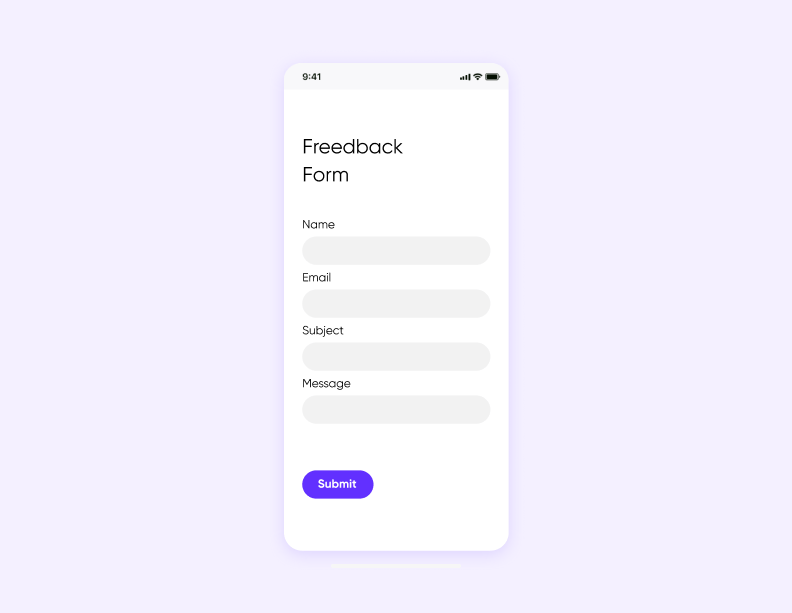
In the feedback form, it is necessary to add fields where users can place contact information or leave a message into.
13. Be sure you can depend on your partners.
The question of how to make a successful app is never easy to answer. While there is a mobile app development team responsible for analytics, design and code, you may also have many other partnerships depending on your industry. Perhaps you will collaborate with other brands and bloggers, use third-party services, interact with sellers or contractors — if you have a marketplace, integrator or service like Ebay or Etsy.
It is important to choose all partners carefully because the success of the app largely depends on them. If the development team makes a low-quality product, a blogger turns out to be unreliable, a third-party service fails, or a marketplace seller delivers plainly low-quality goods, this will affect the reputation of the app. There are different ways to check partners in each case. But reviews and recommendations are the most reliable reasons to decide. Partners’ mistakes can lead to negative customer experience (CX), which means that people won’t interact with your company.
14. Plan an advertising budget
When you decide to make an app, it’s important to remember — after you release the product, expenses won’t stop. You will need to actively promote and advertise your new app. Marketing is how to make a successful app that meets your business goals. There is a way to implement some integrations for free, but it is almost impossible to bring a new product to the market without a budget. You need to budget a separate expenditure item — marketing expenses.
The advertising budget is easy to squander if you choose the wrong channels for marketing communications, brand voice or content. Advertising requires a huge amount of work. That is why you need to hire a professional marketer, advertising designer and copywriter in your team or use outsourcing. Agencies and freelancers provide promotion services. The first option is okay if you want a turnkey promotion and are ready to pay more. The second option also works, but you have to select freelancers carefully and coordinate their work on your own.
15. Enter the market at the right time
It’s important to make an app on time. For some apps, in more conservative areas, release time is not as important. But if you have an innovative product, then timing is crucial. The sooner you release, the better. You have to remember that the development of the first version of the product takes at least three months. Discuss deadlines with your software development partner in advance. You may need to make adjustments during the design approval stage if you decide to do something more complex than you intended originally. It is impossible to plan ahead of time to the exact day. But it is quite realistic to plan down to the month.
Sometimes you need to make an app by a specific date or by a specific season. In this case, to meet the deadlines, it is better to start the mobile app development in advance. To speed up the process, you can first release an MVP, an app with limited functionality, which you will refine further. Read more about MVP and how to make a successful app with it in our article.
16. Track metrics after app launch
When the custom app development is over and your product has entered the market, it is important to monitor user behavior carefully. Key product metrics will help you to understand users interests, how engaged they are, why they leave, and how to attract new users.
Here are some of the main metrics to consider:
-
- Retention rate. This metric shows what percentage of users re-enter the app within a certain period. It is important to remember the specifics of the business here. There are apps that people need every day, for example, corporate messengers. But there are also apps such as mobile operators, which people use once a month to deposit money into their account. In this case, a low monthly user retention rate will be normal. Although if you want people to spend more time in an app, you can entice them with useful and entertaining content. For example, Starbucks added a “Mobile Order & Pay” feature, which allows clients to make an order through the app before they arrive at the store.
-
- MAU and DAU — Monthly Active Users and Daily Active Users. It naturally stems from the user retention rate metric. Bear in mind, you decide what qualifies as activity yourself, depending on the business specifics.
- CPA (Cost per Acquisition). It shows how much marketing spend it takes to attract a new client. To calculate it, you need to divide your marketing expenses by the number of new users.
- Stickiness — user engagement. This metric shows how attached users are to your app. You can calculate this using the MAU / DAU formula.
- CSS (Customer Satisfaction Score). The level of clients’ or users’ satisfaction. This metric allows you to evaluate the quality of user interaction with the product. It is usually used to evaluate a feature for example, after you added a new one. When a person uses a new feature for the first time, the app asks them to rate it.
- There are more metrics, but something different will be relevant for each business area. The staff of the company or the partner team should have a good analyst who can correctly interpret the numbers. In one of our articles, we describe the metrics that help to monitor the mobile app development process at different stages. For the details — click the link below.
Check list successful app development
In order to make an app, you need to go through an extensive and complex process. Now that we covered all the main aspects that may affect the startup’s success, let’s put them all in a checklist so it’s easier to remember everything:
1. Come up with a strong app idea. It doesn’t have to be innovative but needs to have reasons behind it. The product has to meet the needs of the target audience and do this better than competitors.
2. Make sure you are an expert in the field or hire an expert.
3. Conduct a thorough market research to define your direct and indirect competitors and target audience.
4. Based on your analysis choose a monetization model.
5. Consider what content or services will be in your app. Calculate the budget required to create unique content and maintain the quality of services.
6. Choose a reliable agency to entrust the development. We recommend full-cycle development agencies. They will lead your project from analytics to market release.
7. Separately discuss the UX design with the development team. At this stage developers will build the app logic.
8. Make sure that the UI matches the target audience’s tastes and your business goals.
9. Plan a testing budget to ensure that your app is stable.
10. Make sure to have tech support. After the release, you may need to quickly solve emerging problems and make changes to the app.
11. Discuss how the app will protect users’ personal data, with the development team.
12. Consider how clients will contact support if they have questions. Make this connection as fast and seamless as possible.
13. Carefully choose all pa rtners: developers, vendors, bloggers, and third-party services that will integrate with the app.
14. It is not enough just to make an app. You still have to enter the market. Be ready to allocate a sizable marketing budget in the beginning.
15. Discuss time-to-market with a technical partner and adjust the features of the first version if necessary.
16. Track key product metrics after release. It will help you to understand what improvements to make.
As you see, a team of analysts, designers, and programmers is responsible for most of these steps. Therefore, it’s crucial to hire a reliable team of professionals with a huge mobile app development experience. If you need one, we at Purrweb create apps for startups in various fields. For example, recently we developed an online psychotherapy service, a video content marketplace and a fitness app. Fill in the form below — we will answer within 24 hours and discuss your app idea.


